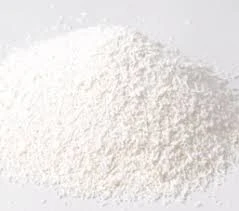
e160c food additive
Understanding E160c The Carotenoid Colorant in Our Food
In the vast realm of food additives, E160c stands out as a significant component among the many substances used to enhance our culinary experience. E160c, also known as paprika extract or capsanthin, is a natural colorant derived from the Capsicum annuum plant, commonly referred to as bell peppers and other varieties of paprika. This vibrant red pigment has found its way into numerous food products, thanks to its appealing color and potential health benefits.
The Source of E160c
E160c is extracted from red peppers, particularly from the fruits of the Capsicum plant. The extraction process involves the use of organic solvents to isolate the carotenoids present in the peppers. These carotenoids, primarily capsanthin and capsorubin, are responsible for the intense red color associated with many spicy dishes and condiments. The use of paprika extract as a color additive dates back centuries, highlighting its deep-rooted presence in various culinary traditions around the world.
Applications in Food
One of the most common uses of E160c is in processed foods. It serves as a color enhancer in a wide range of products, including snacks, sauces, and processed meats. For instance, you might find E160c in your favorite hot sauce, giving it that rich red hue that is so enticing. It is also frequently used to color cheese, soups, and salad dressings, making these products visually appealing to consumers.
The appeal of E160c goes beyond mere aesthetics; it also offers some health benefits. Carotenoids are known for their antioxidant properties, which can contribute to reducing inflammation and protecting against certain diseases. As consumers have become increasingly health-conscious, the incorporation of natural additives like E160c offers a better alternative to synthetic dyes, which are often viewed with skepticism.
Safety and Regulations
e160c food additive

As with any food additive, safety is paramount. E160c is considered safe for consumption at recommended levels and is approved by various food safety authorities, including the European Food Safety Authority (EFSA) and the U.S. Food and Drug Administration (FDA). These bodies continuously review the scientific evidence to ensure that the usage of additives like E160c does not pose health risks to consumers.
However, it is essential to note that while E160c is generally regarded as safe, some individuals may have sensitivities or allergies to specific types of peppers. As such, food manufacturers are required to provide clear labeling on their products, enabling consumers to make informed choices regarding their dietary restrictions.
The Future of E160c
In an era where consumers are more aware and concerned about what goes into their food, the demand for natural additives like E160c is likely to continue to rise. The growing trend towards clean label products—foods made without artificial additives—means that manufacturers are increasingly seeking natural alternatives to enhance color and flavor.
Furthermore, as research continues to explore the health benefits of various natural colorants, E160c may gain even more attention for its potential roles beyond just food coloring. The ongoing studies on carotenoids suggest that they could play significant roles in maintaining health, from improved vision to enhanced immune response.
Conclusion
In summary, E160c is more than just a food additive; it is a natural, vibrant colorant that adds appeal to our food while offering potential health benefits. Its safety and versatility make it a popular choice among food manufacturers who wish to enhance their products without resorting to artificial alternatives. As consumer preferences shift towards more natural options, E160c will likely continue to play a vital role in the future of food production, making it an essential component of our diets. Understanding additives like E160c empowers consumers to make informed choices, ensuring that the foods we enjoy are not only beautiful but also beneficial.
-
Sodium Dichloroisocyanurate Safety Handling ProtocolsNewsJul.29,2025
-
Mining Chemicals for Copper Extraction Processes GuideNewsJul.29,2025
-
Fertilizer for Sale Shipping and Storage TipsNewsJul.29,2025
-
Dimethyl Disulfide as Sulfurizing AgentNewsJul.29,2025
-
Benzotriazole Safety Data Handling and Storage GuidelinesNewsJul.29,2025
-
Ammonium Bicarbonate Safety Handling Storage GuidelinesNewsJul.29,2025
-
The Transformative Role Of Trichloroisocyanuric Acid in Water TreatmentNewsJul.23,2025
Hebei Tenger Chemical Technology Co., Ltd. focuses on the chemical industry and is committed to the export service of chemical raw materials.
-

view more DiethanolisopropanolamineIn the ever-growing field of chemical solutions, diethanolisopropanolamine (DEIPA) stands out as a versatile and important compound. Due to its unique chemical structure and properties, DEIPA is of interest to various industries including construction, personal care, and agriculture. -

view more TriisopropanolamineTriisopropanolamine (TIPA) alkanol amine substance, is a kind of alcohol amine compound with amino and alcohol hydroxyl, and because of its molecules contains both amino and hydroxyl. -

view more Tetramethyl Thiuram DisulfideTetramethyl thiuram disulfide, also known as TMTD, is a white to light-yellow powder with a distinct sulfur-like odor. It is soluble in organic solvents such as benzene, acetone, and ethyl acetate, making it highly versatile for use in different formulations. TMTD is known for its excellent vulcanization acceleration properties, which makes it a key ingredient in the production of rubber products. Additionally, it acts as an effective fungicide and bactericide, making it valuable in agricultural applications. Its high purity and stability ensure consistent performance, making it a preferred choice for manufacturers across various industries.











